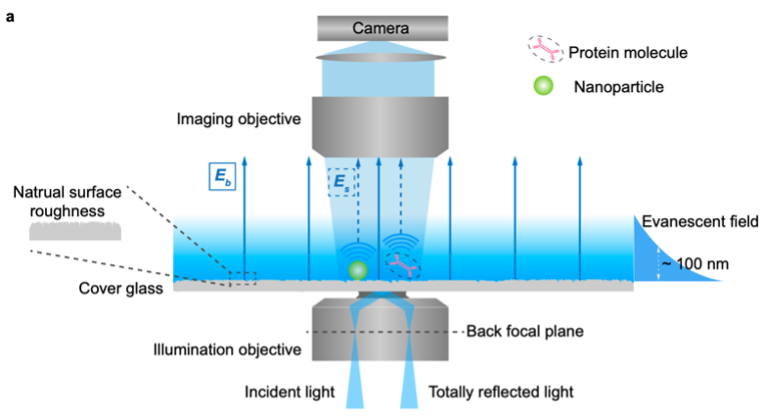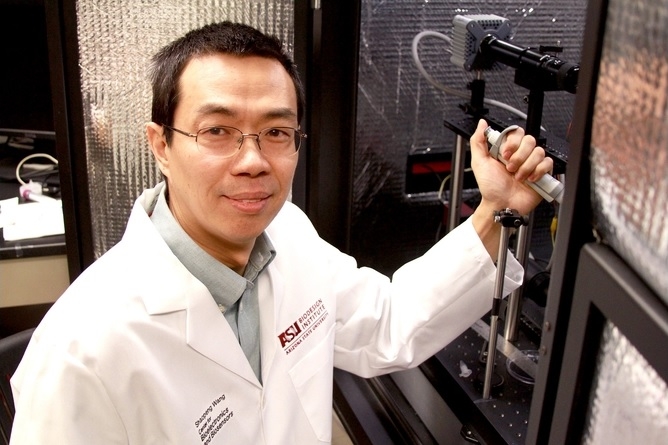
Oct 29, 2024
Biomedical engineering researcher Shaopeng Wang is transforming urinary tract infection diagnosis through patented technology.
Related paper: https://doi.org/10.1021/acs.analchem.1c00019
Nov 20, 2024, KJZZ news report: ASU researcher develops test to determine if antibiotics will be effective against a UTI

October 24, 2022
New technique sheds light on elusive biomolecules
Through an innovative application of surface plasmon resonance technology (SPR), Shaopeng Wang’s lab at ASU’s Biodesign Center for Bioelectronics and Biosensors have developed an oscillating biolayer that enhances the capability of SPR to detect the binding events of small molecules previously difficult for mass dependent traditional SPR.

April 29, 2022
An innovative new technique, evanescent scattering microscopy (ESM) is a promising alternative to other label-free detection techniques such as surface plasmon resonance (SPR). The new method by Shaopeng Wang’s team can image the interference of evanescent light by single molecules and measure protein-protein interactions and other biomolecule phenomena potentially relevant to drug design and development.
.

November 19, 2021
New microscopy method offers 3D tracking of 100 single molecules at once
Shaopeng Wang and his colleagues at ASU has developed an innovative method using surface plasmon resonance microscopy (SPRM) to record data on 100 molecules simultaneously in real time that can be used to study molecular binding events with potential applications in pharmaceutical and diagnostic fields.
“Taking advantage of the extremely high sensitivity in the axial (vertical) direction, SPR can track the particle’s axial motions with sub-nanometer precision, which is much more precise than regular microscopy imaging,” Wang said. “We demonstrated that this feature can be used to study the details of molecular binding events at the single molecule-level and also for processing multiple signals at once.”

Sept 21, 2020
Optical imaging of single-protein size, charge, mobility, and binding
Based on traditional protein analysis methods such as gel electrophoresis and western blot, Shaopeng Wang’s lab has developed a single molecule analysis technique proposed by N.J. Tao in which single molecules linked via polymer are oscillated on a surface with an applied electric field. By analyzing the scattering pattern of the tethered molecules in an evanescent field, the size, charge, and mobility of the molecule can be derived.

Sept 21, 2020
Plasmonic Scattering Imaging of Single Proteins and Binding Kinetics
Although surface plasmon resonance microscopy (SPRm) offers high spatial resolution and has proven to be a capable technique for imaging a range of samples from single cells to exosomes and nanoparticles, it struggles with the detection of small molecules such as single proteins. Shaopeng Wang and his colleagues from ASU Biodesign has responded to this limitation through the development of plasmonic scattering microscopy (PSM) which offers extraordinarily high signal to noise ratio for single protein detection that can be applied to the identification of proteins and measurement of binding kinetics.


